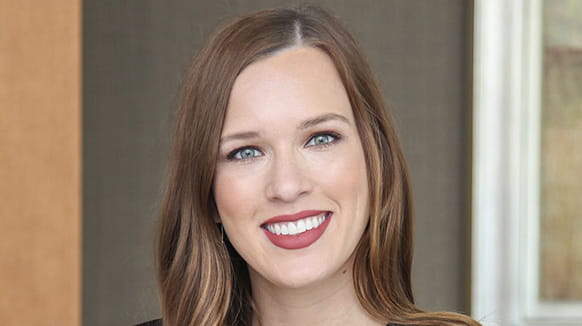Updated on 4/23/2020
The Coronavirus Aid, Relief, and Economic Security Act (the “CARES Act”), a historic $2 trillion relief package signed into law on March 27, 2020, seeks to address the economic impact of the COVID-19 pandemic on several industries. We have already discussed in detail the relief it provides to the following entities and individuals:
- Small businesses by creating a $349 billion loan program called the Paycheck Protection Program;
- Midsize businesses by allocating up to $500 billion to the Economic Stabilization Fund to provide loans to eligible businesses, states, and municipalities, with targeted relief for airlines and their employees; and
- Workers by expanding unemployment insurance benefits.
The CARES Act also allocates $100 billion to the Public Health and Social Service Emergency Fund, to be distributed as relief funds to hospitals and other healthcare providers on the front lines of the coronavirus response (“Provider Relief Fund”). A portion of the Provider Relief Fund is earmarked, in part, for hospitals to support healthcare-related expenses or lost revenue attributable to COVID-19 and to ensure uninsured Americans can get testing and treatment for COVID-19 without a bill.
More specifically, on April 10, 2020, the Centers for Medicare & Medicaid Services (“CMS”) announced it had begun the immediate distribution of the initial $30 billion of the Provider Relief Fund (the “Initial Rapid Distribution”), with funds being delivered to providers via direct deposit. All facilities and providers currently enrolled in Medicare that received Medicare fee-for-service (“FFS”) reimbursements in 2019 are eligible to participate in the Initial Rapid Distribution of this initial 30% of the Provider Relief Fund. These facilities and providers are designated to each receive a proportionate share of the initial $30 billion based on their share of national Medicare FFS reimbursements in 2019 (which totaled $484 billion).
The estimated payment for the portion of the initial $30 billion distributed to providers is around 6.2% of its 2019 Medicare FFS payments. A more precise estimate may be calculated by dividing 2019 Medicare FFS payments received by $484 billion and multiplying that ratio by $300 billion.
Providers will be paid directly via their Automated Clearing House (“ACH”) account information on file with UnitedHealth Group, UnitedHealthcare, or Optum Bank, or used for reimbursements from CMS. Any automatic payment will be accompanied by the ACH payment description of “HHSPAYMENT.” Providers who normally receive a paper check for reimbursement from CMS will likewise receive a paper check in the mail for the CARES Act payment sometime in the next few weeks.
Within 30 days of receiving this payment, the provider must sign an attestation confirming receipt of the funds and agreeing to the terms and conditions of payment (e.g., no “balance billing” any patient for COVID-related treatment — not seeking collection of out-of-pocket payments from COVID-19 patients greater than what the patient would have otherwise been required to pay in-network). The CARES Act Provider Relief Fund Payment Attestation Portal is now open.
By signing the attestation pursuant to such terms and conditions, the provider would be maintaining that it is eligible for payments under the CARES Act by certifying in writing that it:
- Provides or provided after January 31, 2020 diagnosis, testing, or care for individuals with possible or actual cases of COVID-19;
- Billed Medicare in 2019;
- Is not currently terminated from participation in Medicare;
- Is not currently excluded from participation in Medicare, Medicaid, and other federal health care programs;
- Does not currently have its Medicare billing privileges revoked;
- Will only use the funds to prevent, prepare for, and respond to coronavirus;
- Will only use the funds received to serve as reimbursement for healthcare-related expenses or lost revenues attributable to coronavirus; and
- Will not use the funds to reimburse expenses or losses that have been or will be reimbursed from other sources.
Following publication of the terms and conditions online, the Department of Health and Human Services (“HHS”) clarified that providers that have ceased operation as a result of the COVID-19 pandemic are still eligible to receive funds so long as they provided diagnoses, testing, or care for individuals with possible or actual cases of COVID-19. Further, the care provided does not have to be specific to treating COVID-19, and “HHS broadly views every patient as a possible case of COVID-19.”
On April 22, 2020, HHS announced that portions of the remaining $70 billion in the Provider Relief Fund would be allocated as follows:
- $20 billion to Medicare facilities and providers impacted by COVID-19, based on share of 2018 net patient revenue, to supplement the initial $30 billion distribution;
- $10 billion to hospitals in areas particularly impacted by COVID-19, such as New York;
- $10 billion to rural health clinics and hospitals;
- $400 million to Indian Health Service facilities; and
- Unspecified amount to reimburse providers, at Medicare rates, for COVID-related treatment of uninsured patients.
HHS has also been awarding separate funding to certain medical centers and programs through the Health Resources and Services Administration (“HRSA”). For example, HHS recently announced $1.3 billion to 1,387 HRSA-funded health centers as part of its response to the COVID-19 pandemic. HHS also announced $90 million for 581 entities providing healthcare services to HIV/AIDS patients affected by COVID-19.
If you have questions about how the CARES Act will affect you and/or how COVID-19 is affecting the healthcare industry, please contact a member of our Healthcare and Life Sciences Practice Group below. You can also review our COVID-19 Resources page for more information.




